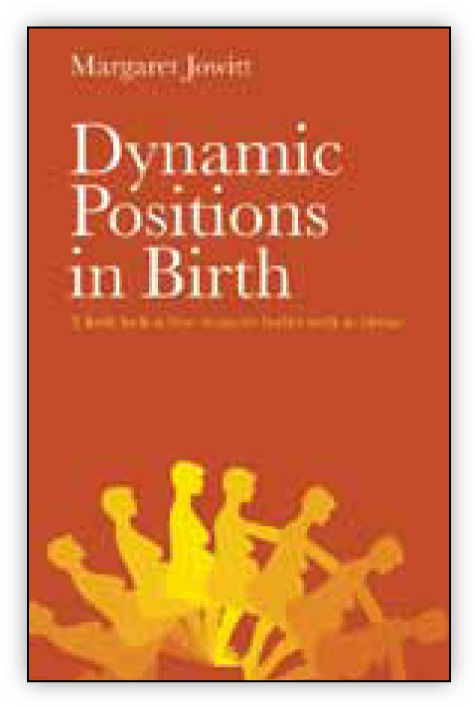Dynamic Positions in Birth: A fresh look at how women's bodies work in labour By Margaret Jowitt

The title of this book tells the reader that it will take a fresh look at how women's bodies work in labour, and the author has done very well in meeting this expectation.
There are 10 chapters in the book, which are titled well, including: ‘The choreography of the uterus in labour and birth’ and ‘Making birth better’. Each chapter contains appropriate images which help the author to convey the message to the reader. Although the images towards the beginning of the book may be considered better than those in the latter chapters, they are all relevant to the content and support the reader throughout the book.
This book takes the reader on a journey from the very beginning of our knowledge of birth and the furniture that has been used to support women through the ages in birth. There are also well-chosen excerpts throughout the book, including one of the first midwifery books known to us today—which the reader may be surprised to see gives good advice, even though it was written hundreds of years ago.
The author provides a good overview of the research available and one chapter is dedicated to research evidence (although evidence is also discussed throughout the book). There are many different avenues of research discussed in this chapter and it can sometimes feel that the research element is spread a little thinly, but it does give a rounded discussion including up-to-date national guidance from organisations such as the Royal College of Obstetricians and Gynaecologists and the National Institute for Health and Care Excellence.
The book has clear subheadings in each chapter, allowing the reader to pause mid-chapter if necessary. For example, in the ‘Active Uterus’ chapter, subheadings include ‘The incubator’, ‘The lifeline’ and ‘The ejection seat’, which are fun and entice the reader to continue.
The author has been able to explain well the rationale behind her ideas, and suggests that rather than considering the position of the fetus and/or the position of the mother during labour, the interaction of the two combined is the most important thing. Using this idea, the author begins to suggest some changes to thinking within midwifery practice (and obstetrics) that are certainly likely to appeal to those who have a strong belief in normal birth and the woman's ability to have a normal birth. The idea that the fetus is not just a passive participant in labour is also raised, and the role of the fetus in navigating its way through the maternal pelvis is discussed at length, but is also interesting and readable.
The latter chapters concentrate further on the maternal pelvis and, in particular, the uniqueness of the human pelvis, which is described as nature's compromise between ‘staying pregnant, walking upright and giving birth’. These chapters also begin to discuss at length the technology that has grown around birth, its usefulness and effectiveness and the evidence that supports it—which, unsurprisingly, does not necessarily support the needs of the woman in labour and birth.
The final chapter is dedicated to ‘Making birth better’ and planning for the future. Although admirable, it does not always account for the choices that women sometimes make in labour, such as epidural anaesthesia and the fact that this is not the midwife's choice but the mother's. Nor does it fully account for the differences in the skills and knowledge that the midwife today needs to acquire, on account of the broad range of care the midwife must be able to give. Rather, the book seems to assume that all midwives are comfortable in birthing women in any position; unfortunately, although this may be a sensible assumption, it is not necessarily a correct one. The book has a comprehensive reference section and index for the reader to refer to when needed and return to as often as required.
Overall, this is a useful book, which is easy to read and supports midwives with the evidence behind their decision-making. The author's passion for birth and positioning during labour and birth is clear, and feels almost motivational at times. This is an excellent book for a midwife who wants to maintain professional reading or wishes to gently remind himself or herself of the anatomy and physiology of the pelvis in order to support women to birth in the position that they want to.

